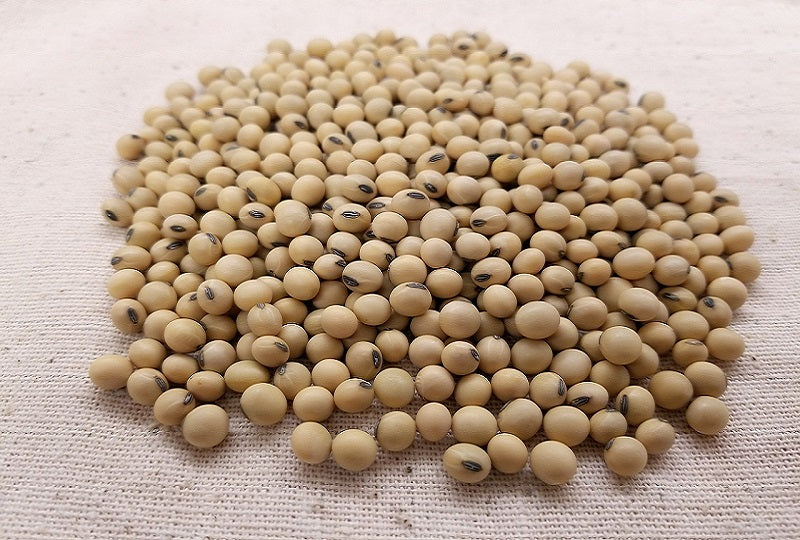Fermented vs. Unfermented Soy
Soy has not always been an inflammatory food. In recent years, however, it has become one of the most genetically modified crops in the world and is featured as a primary ingredient in a multitude of processed foods.
Unfermented soy is often hidden in processed foods and ingredients including:
- Vegetable gum
- Vegetable starch
- Vegetable broth
- Baked goods
- Canned fish
- Oils and spreads
- Cereals
- Biscuits
- Crackers
- Protein bars
- Baby formula
- Peanut butter
- Cold cuts and processed meat
- Sauces
- Ice cream
Traditionally, soy certainly wasn't eaten this way, and not in large amounts either. In a number of Asian cultures, soy was eaten very differently — in fermented form.
Organic, non-GMO fermented soy products are healthy foods which are high in protein. The beans undergo a fermentation process with specific bacteria, yeasts or mould, which makes it beneficial for your gut flora. The fermentation process enhances digestibility and also improves the mechanism of action of the plant chemicals found in soy (i.e. isoflavones).
Soy isoflavones in estrogen dominance and estrogen excess
The isoflavones in fermented soy act as a phytoestrogen (plant estrogen), whereby these molecules (which look like estrogen) can latch on to our body's estrogen receptors and elicit a “weak” estrogenic effect. Isoflavones can either be estrogenic or anti-estrogenic, therefore, they can be applied as ‘food as medicine’ in cases of low estrogen or estrogen excess/dominance.
In cases of estrogen deficiency, phytoestrogens can be estrogenic. The soy isoflavones provide estrogenic activity when the body lacks its own estrogen. On the other hand, phytoestrogens will compete for absorption with endogenous estrogen (our body's own estrogen) in cases of estrogen dominance or high unopposed estrogen. When phytoestrogens latch on to our body’s estrogen receptors, this will result in a weaker estrogenic action. Coupled with optimal estrogen metabolism and elimination, this will reduce symptoms of estrogen dominance (i.e. PMS, tender breasts, endometriosis, fibroids).
Facts about fermentation
- Fermentation reduces anti-nutrients such as phytates which can inhibit nutrient absorption.
- Fermented soy contains high levels of vitamin K2, a nutrient which works synergistically with vitamin D, magnesium and calcium, all of which are essential for bone and cardiovascular health. Menaquinone, the optimal form of vitamin K2, is produced by bacteria during the fermentation process. It is said that a large percentage of the Western population is deficient in vitamin K2.
Examples of fermented soy foods
Tempeh: A 'slab' of fermented soybeans originating from Indonesia, tempeh has a delicious 'meaty' texture. This wonderful plant-based protein source is delicious on skewers, in curries, or pan-grilled.
Natto: Originating from Japan, this form of fermented soy contains powerful enzymes (specifically nattokinase) which can aid with cardiovascular health. Natto requires a very acquired taste though! It is gooey and stringy.
Miso: Also originating from Japan, this fermented soybean paste is made with koji or fermented rice grains. Traditionally, miso is used for soups, but it can also be used as a base for vegan broths, stir-fries and marinades. Red, white, and brown miso pastes are available.
Doenjang: A Korean version of miso, this fermented soybean paste is also a core ingredient for many soups and stews.
Douchi: Originating from China, douchi is made from fermented and salted black soybeans. It is often used in bases of sauces, soups, and marinades.
As you can see, fermented soy is VERY different from the soy we may be familiar with such as our supermarket soy milk, tofu, soy protein, soy cheese, and other non-fermented products.
The fuss over soy explained
Soy is a controversial food due to the health issues linked to consuming soy-based foods. However, could this be due to the way it is processed, prepared, and consumed?
The Western way of consuming soy in combination with other inflammatory foods, along with a sedentary lifestyle and specific genetic predispositions, is what drives the ill-health effects of soy that are well known. These include:
- Nutrient deficiencies and digestive discomfort caused by its high antinutrients
- It is goitrogenic and can interfere with thyroid hormone function
- Gynaecomastia and other estrogenic symptoms in men such as erectile dysfunction, low libido, poor sperm count and quality, as well as mood disorders
- Other hormonal imbalances in women
If you wish to experiment with fermented soy, ensure it is organic and non-GMO. There are great ways to make use of fermented soy and you can start with some of these delicious recipes:
- Salmon with Miso
- Tempeh, Rice Noodles & Pumpkin Sauce
- Miso Bowl with Grilled Tempeh
- Pumpkin Miso Dip
- Soul Bowl Miso Salmon
- Miso Broth with Sesame Salmon & Buckwheat Udon Noodles
Summary
Unfermented, genetically modified soy-based ingredients are hidden in many food products and ideally, should be avoided. In essence, aim to consume soy in its fermented form. Soy in its fermented form can be beneficial in cases of both oestrogen excess, and deficiency.
REFERENCES
Crystal C Douglas, Sarah A Johnson, Bahram H Arjmandi. Soy and its isoflavones: the truth behind the science in breast cancer. Anti-Cancer Agents in Medicinal Chemistry. 2013. Volume 13, Issue 8.
https://www.eurekaselect.com/114971/article
Muthukumaran Jayachandran, BaojunXu. An insight into the health benefits of fermented soy products. Food Chemistry. 2019. 271:362-371.
https://www.sciencedirect.com/science/article/abs/pii/S0308814618313153
Zhen-Hui Cao,Julia M.Green-Johnson, Nicole D.Buckley, Qiu-Ye Lin. Bioactivity of soy-based fermented foods: A review. Biotechnology Advances. 2019. 37(1):223-238.
https://www.sciencedirect.com/science/article/abs/pii/S073497501830199X






















